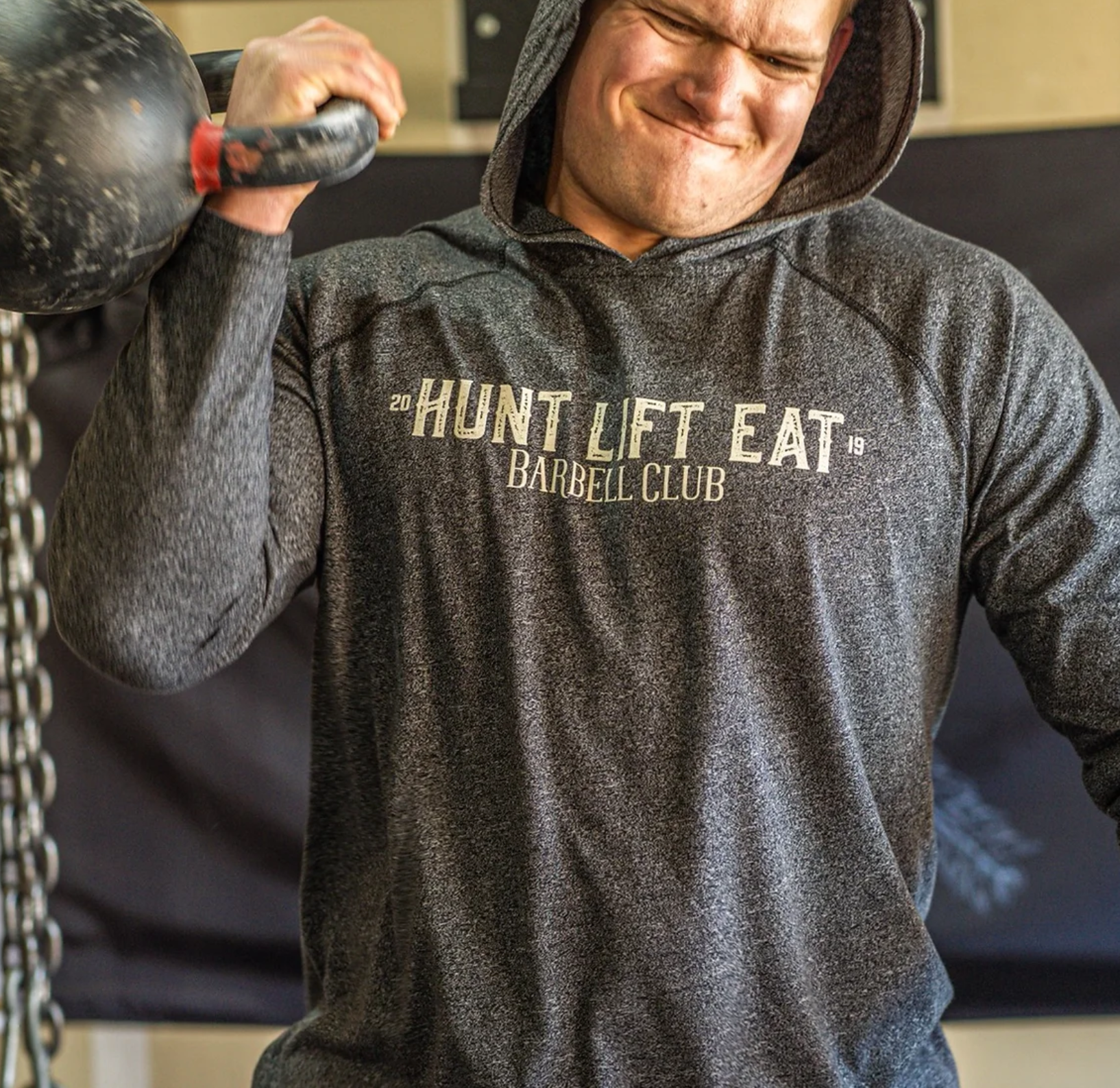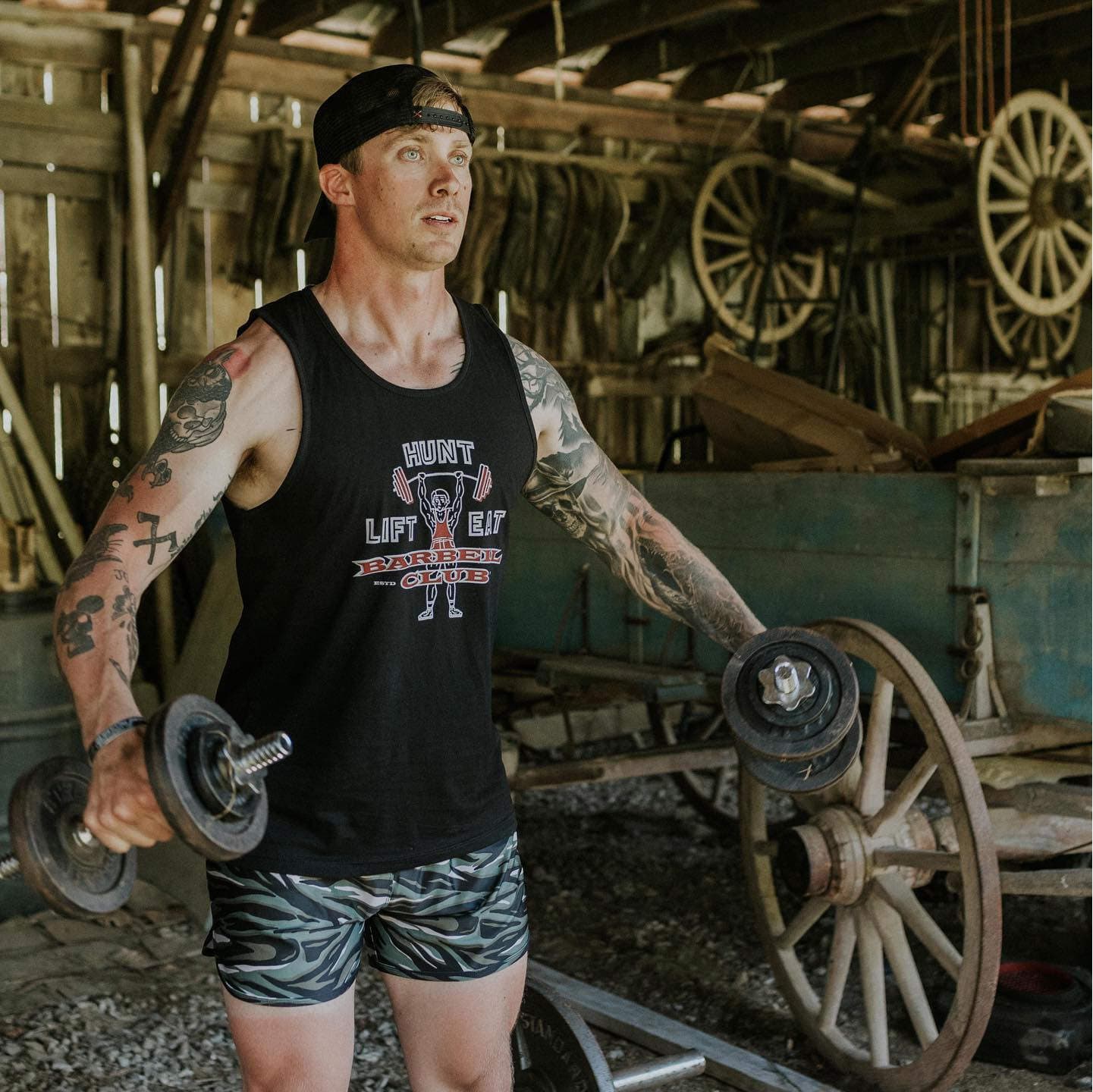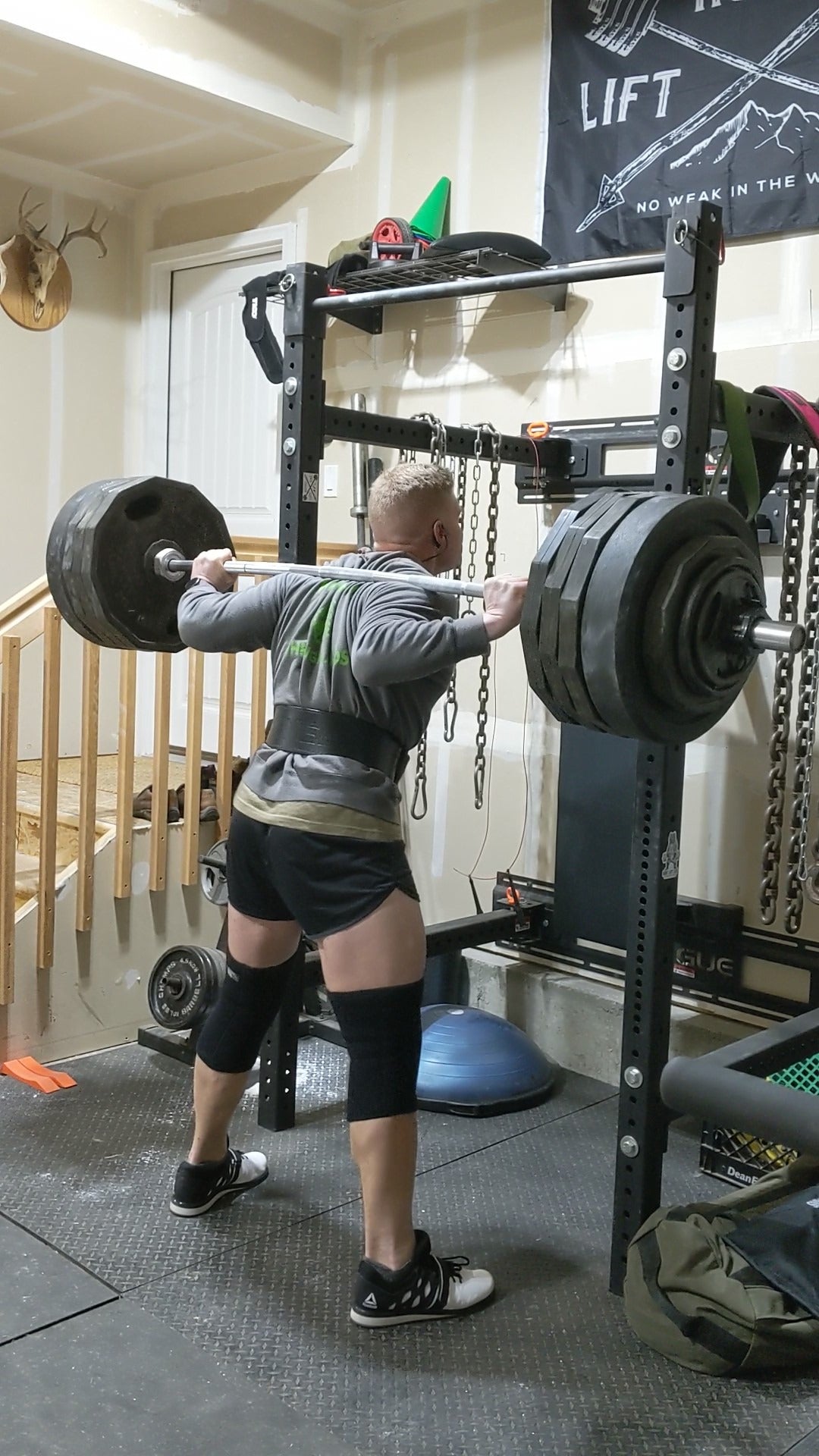Hunting presents a unique set of physical demands, from picking up a field dressed animal to walking under load over uneven terrain, to hauling yourself and gear up a tree in a climber. This is particularly true out west, where altitudes can quickly soar past 8,000’. Whether you are about to take your first trip out west or you are an avid hunter looking to specifically tailor your workouts, keep reading. This article walks you through what we at Hunt Lift Eat use to design our workout programs tailored towards hunting.
None of this is revolutionary stuff, and if you are familiar with first responder/LEO or military fitness training programs, this most likely will seem pretty familiar. The demands are similar, after all.
So, what should a hunter (particularly one in the backcountry), train for:
You need to be able to pick things up, period, whether it is your ruck or a field-dress pronghorn. There’s no weak in the wild.
Of course you don’t have to deadlift 500 pounds (although it won’t hurt you), but you should have a baseline level of strength. Because most loads you experience outside the gym aren’t going to be nice and even like a barbell, we recommend incorporating other implements into your training. A 60-100 pound sandbag is a great place to start, and you can effectively do the same movements you would with a barbell, but have much greater carry-over to the kind of movements and loads you will experience outside the gym.
Here’s an example circuit from our TYR Mountain Prep Program:
4 Rounds:
Work capacity is the ability to exert extended submaximal effort under cardiovascular and muscular stress. It is the capacity to which you can keep moving and working while your heart rate is up.
An understanding of the energy systems helps understand the methodology behind this type of training, but we will save that for a different article (*link to next blog on energy systems*). To train this, focus on steady state functional movements and circuits over an extended period of time (8+ minutes). Frankly, you can’t go wrong with picking a few exercises and throwing them in a 10-20 minute AMRAP (As Many Rounds As Possible) or by picking a string of high-rep, low-intensity exercises and doing them all for time.
Here are a couple examples from our programs to help illustrate:
Example 1 (from our TYR Mountain Prep Program):
12 minute AMRAP:
Example 2 (from our MAGNI Strength x Endurance Program):
For Time:
You need to be able to sustain a heart rate of 130-150 BPM for an extended period of time. This is especially important at altitude, where the unacclimated can see their heart rate hit that from just clearing a flight of stairs.
The obvious answer here is to run, ideally in bouts of 20-plus minutes. There are other ways to get after this, but unless you have something that physically prevents you from running a couple times a week, running is the best answer. There really is now better way to prepare yourself for this physiological requirement. If you are planning on covering miles in the backcountry, then you have to put some in beforehand.
Lastly, we recommend building in prehab work into your routing. There is too much to cover on this topic for the scope of this article, but it is too important to not mention. The more mobility you have around prime movers like your hips and knees, the better you will be able to handle uneven terrain and loads. So, don’t skip this when you train. We recommend focusing on the following:
Be sure to check out our training programs, all of which are designed with these considerations in mind. Try four weeks for free with our IDUN Couch to Mountain Program.
Follow us on Instagram @huntlifteatofficial or the author @pwsunderland
By: Peter Sunderland, CSCS
None of this is revolutionary stuff, and if you are familiar with first responder/LEO or military fitness training programs, this most likely will seem pretty familiar. The demands are similar, after all.
So, what should a hunter (particularly one in the backcountry), train for:
You need to be able to pick things up, period, whether it is your ruck or a field-dress pronghorn. There’s no weak in the wild.
Of course you don’t have to deadlift 500 pounds (although it won’t hurt you), but you should have a baseline level of strength. Because most loads you experience outside the gym aren’t going to be nice and even like a barbell, we recommend incorporating other implements into your training. A 60-100 pound sandbag is a great place to start, and you can effectively do the same movements you would with a barbell, but have much greater carry-over to the kind of movements and loads you will experience outside the gym.
Here’s an example circuit from our TYR Mountain Prep Program:
4 Rounds:
Work capacity is the ability to exert extended submaximal effort under cardiovascular and muscular stress. It is the capacity to which you can keep moving and working while your heart rate is up.
An understanding of the energy systems helps understand the methodology behind this type of training, but we will save that for a different article (*link to next blog on energy systems*). To train this, focus on steady state functional movements and circuits over an extended period of time (8+ minutes). Frankly, you can’t go wrong with picking a few exercises and throwing them in a 10-20 minute AMRAP (As Many Rounds As Possible) or by picking a string of high-rep, low-intensity exercises and doing them all for time.
Here are a couple examples from our programs to help illustrate:
Example 1 (from our TYR Mountain Prep Program):
12 minute AMRAP:
Example 2 (from our MAGNI Strength x Endurance Program):
For Time:
You need to be able to sustain a heart rate of 130-150 BPM for an extended period of time. This is especially important at altitude, where the unacclimated can see their heart rate hit that from just clearing a flight of stairs.
The obvious answer here is to run, ideally in bouts of 20-plus minutes. There are other ways to get after this, but unless you have something that physically prevents you from running a couple times a week, running is the best answer. There really is now better way to prepare yourself for this physiological requirement. If you are planning on covering miles in the backcountry, then you have to put some in beforehand.
Lastly, we recommend building in prehab work into your routing. There is too much to cover on this topic for the scope of this article, but it is too important to not mention. The more mobility you have around prime movers like your hips and knees, the better you will be able to handle uneven terrain and loads. So, don’t skip this when you train. We recommend focusing on the following:
Be sure to check out our training programs, all of which are designed with these considerations in mind. Try four weeks for free with our IDUN Couch to Mountain Program.
Follow us on Instagram @huntlifteatofficial or the author @pwsunderland
By: Peter Sunderland, CSCS









Leave a comment
This site is protected by hCaptcha and the hCaptcha Privacy Policy and Terms of Service apply.